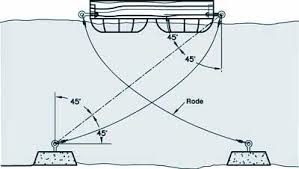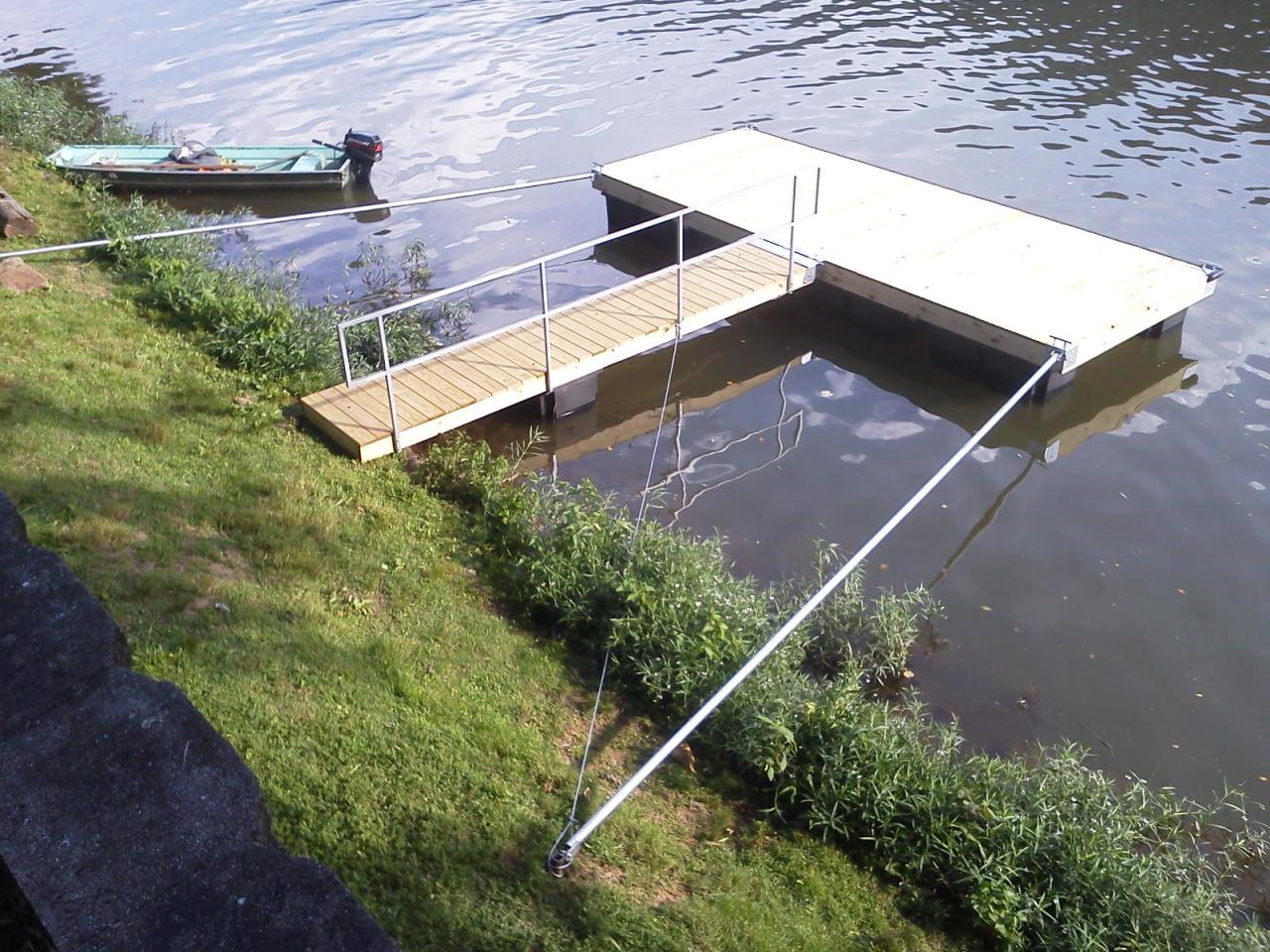One thing to keep in mind is that arms, cables, and chains hooked to shore should be in the same plane as the gangway hinges so that water fluctuations do not tighten of loosen the stabilizers.
Very true RAH, I hear ya and thanks for participating!
I feel like I'm being pig-headed (which I'm known to be on occasion) so bare with me and know that I love each and every one of like a brother and a sister (Jimmy Buffet paraphrase).
I can see the good logic in the poles out in the water. I'm not sure how to do that now that the pond is full. My land is very rocky and it's too late to merely drive a pole in by hand. I'd hit a rock within a few inches and I'd be wasting my time. I thought about the garden hose water jet digging technique, but a rock is a rock.
Dam'd Waters, thanks for the pics. The submerged anchors work very well if the dock is allowed to float around some so that the chains have enough slack at normal level to allow for 3 foot of level increase. I need to keep my dock firm and stationary at normal levels, but still get the flexibility for higher water levels.

The stiff arms are going to be my fall back even if they are cables. This gives me the most hope, but adds two more holes to dig for concrete foundations.

I have run some calculations that use 75 mph winds blowing into the long edge of the dock. The resulting force on the dock is about 600 pounds at the mid way point. Transferring that force through the moment at the shore foundation yields a force on each sono-collumn of 2300 pounds. That sounds like alot, but I think two round or rectangular pillars (sono columns) that are sunk into the ground 3 to 4 feet have a good chance of resisting that kind of force. AND that's at 75 mph winds. At 50 mph winds the forces at the pillars drop to 1000 pounds. At 25 it's 500 pounds force. I think this will work so long as my hinge connections at the gangway and floater are good and solid.